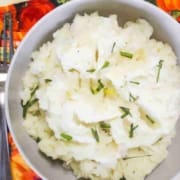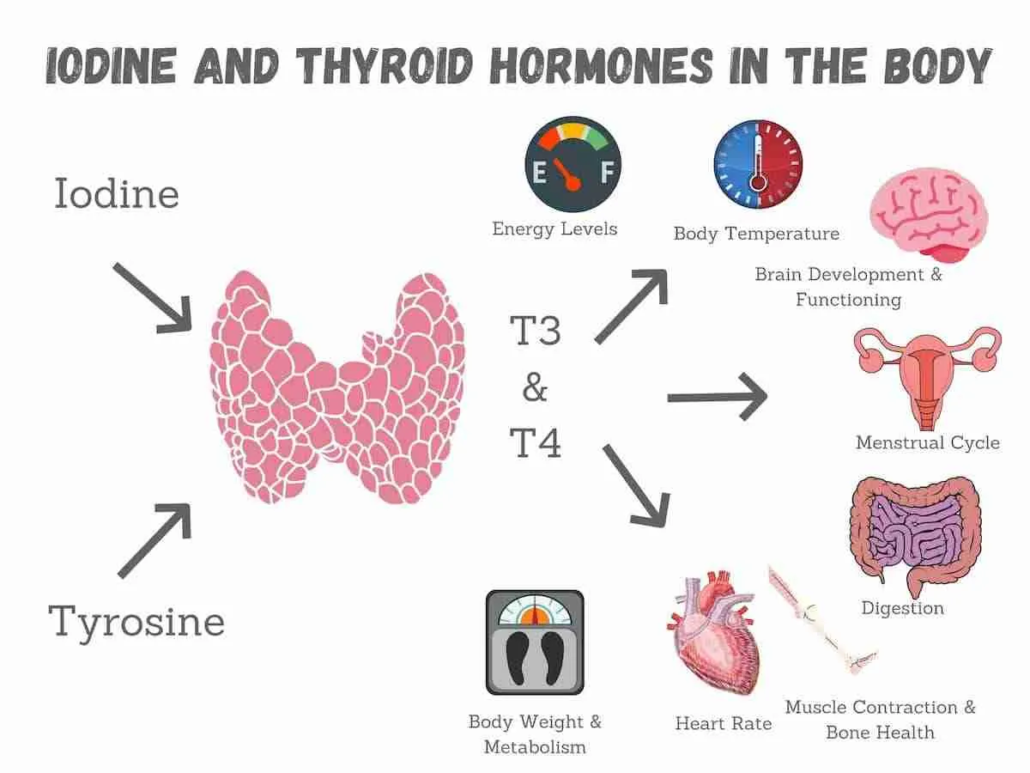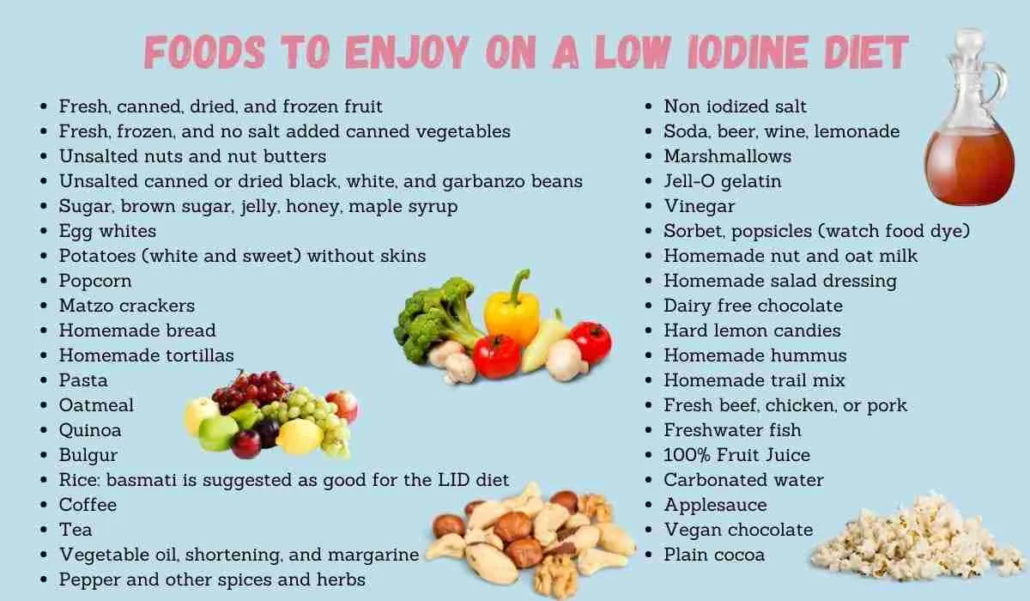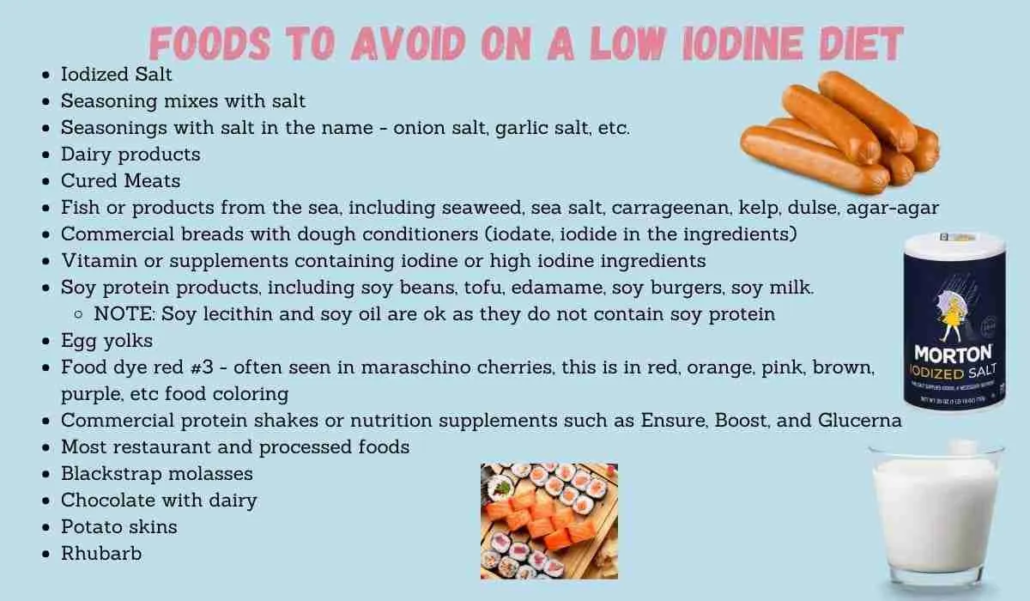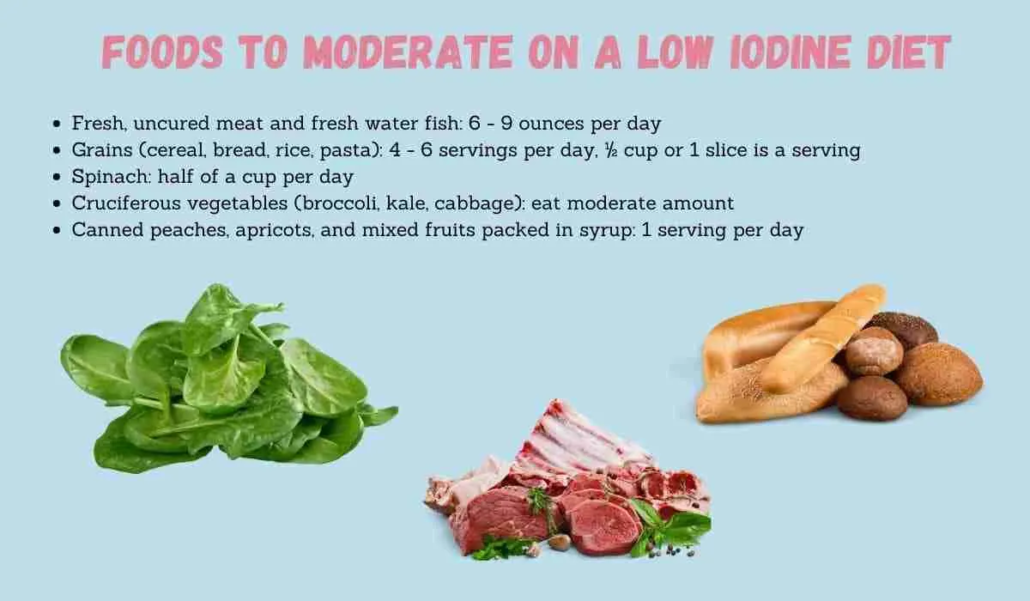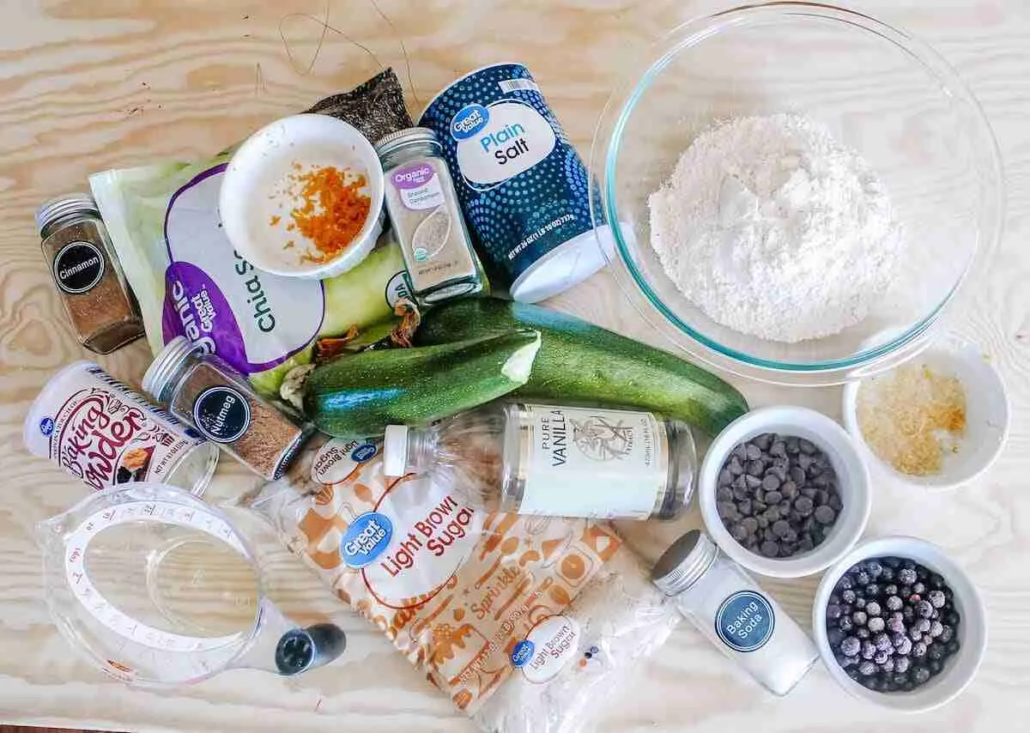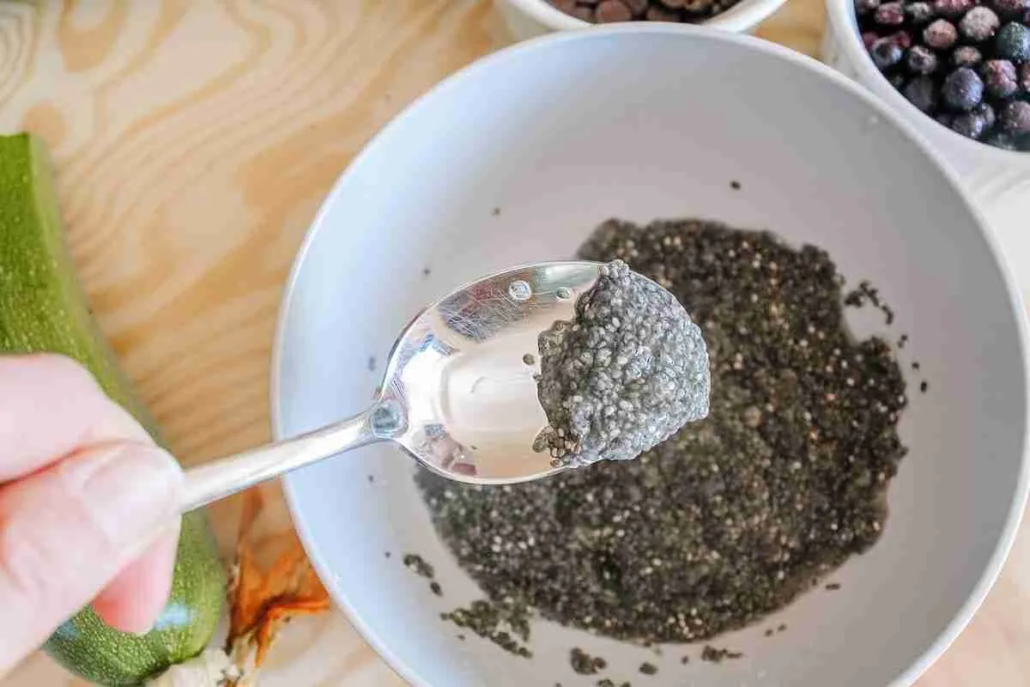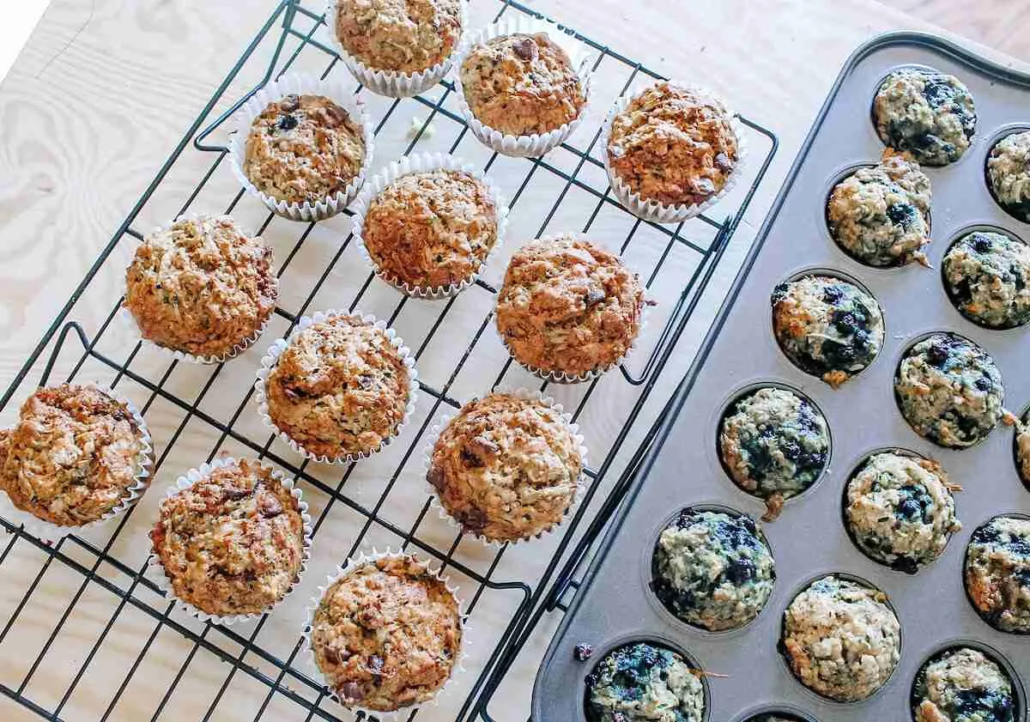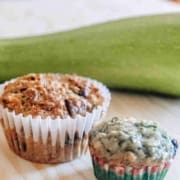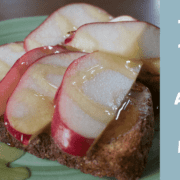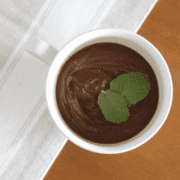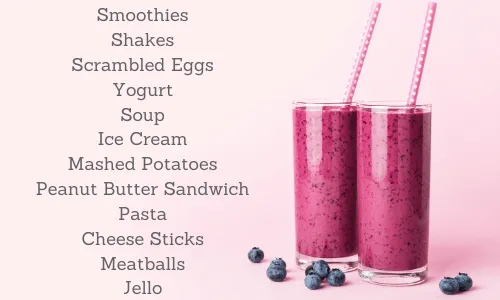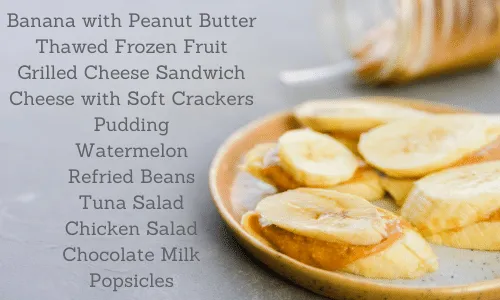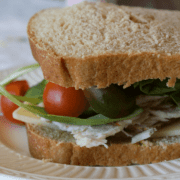Whether it is the holidays or everyday, these dairy free mashed potatoes hit the spot. So creamy and full of flavor, you would never guess they are dairy free and vegan! They are also low iodine diet friendly.
Some links on this site are affiliate links, meaning I may receive a commission at no cost to you if you click on them. As an Amazon Associate, I earn from qualifying purchases.
What You’ll Need
To make these potatoes, you’ll need:
- Potatoes
- Bay leaf
- Garlic
- Vegan margarine or extra virgin olive oil
- Salt (non iodized)
- Black pepper
How to Make
Mashed potatoes are not the most complicated dish, but can be a little tricky. Here are few tips:
- Wash the potatoes well, before and after peeling. You don’t want dirt in your food.
- Start the potatoes in cold water. This ensures they cook evenly.
- Put flavor in the water. Potatoes can absorb flavor from the cooking water. We add garlic and bay leaf in this recipe. You could cook in broth as well.
- Don’t overcook the potatoes. You want them tender enough to mash, but if you overcook them, they will get too starchy and gluey.
- Drain the cooked potatoes well. Then return to the hot pot to let excess water evaporate before adding other ingredients.
- Season the potatoes well. Potatoes themselves are very bland. Taste test to see if you need to up your salt and pepper.
- I find these are much creamier if you use an electric mixer to “mash” or whip them. You can use a potato masher as well, but it may take longer to get to a really creamy texture if that is what you are after.
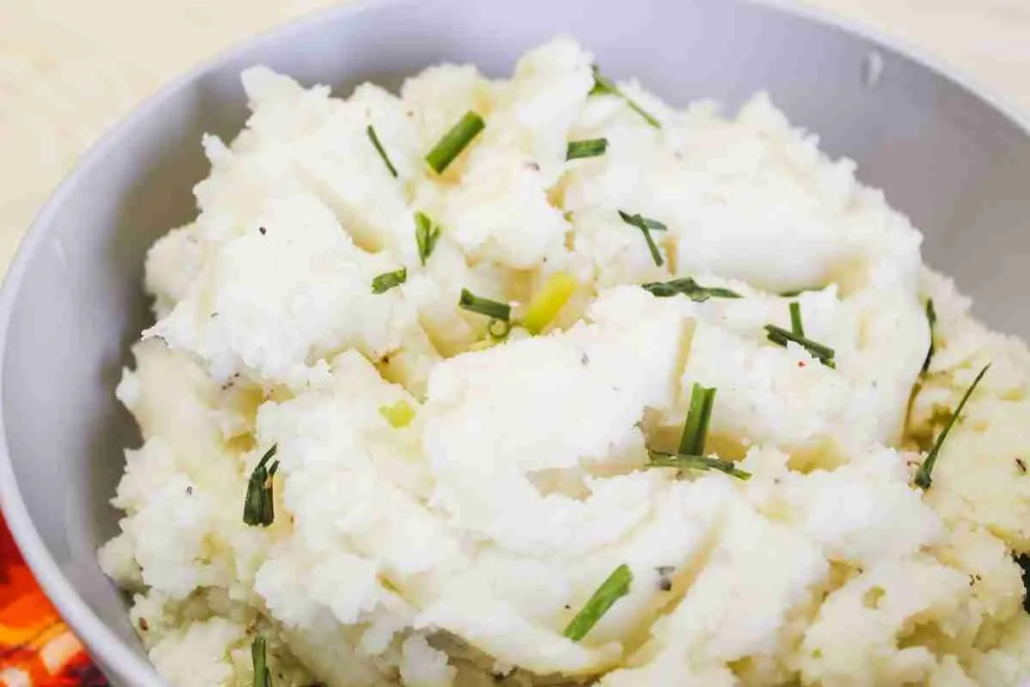
Mashed Potato Variations
Depending on what you want to use the potatoes for, you could easily switch up the seasonings.
- You could substitute coconut milk for half of the vegan margarine or oil, but it will add it’s distinctive flavor. Avoid almond or oat milk. They turn the texture gluey.
- You can reserve some of the starchy cooking water for blending.
- You could add a cheese replacement, like nutritional yeast, for a more savory flavor.
- The garlic infused oil variation listed in the recipe is my favorite. It adds a great burst of flavor but is not overpowering.
- You could make the mashed potatoes in the Instant Pot. Same ingredients. Cook on high pressure for 8 minutes, release the pressure manually, drain, and then mash.
FAQ
What is the best kind of potato to use for mashed potatoes?
The short answer is whatever potato(es) you prefer.
Potatoes are generally categorized as “starchy”, “waxy”, or “all-purpose”. Starchy potatoes tend to be better for mashing. These include russet, white, and yellow potatoes.
Red, purple, and fingerling potatoes are more waxy. While you can still make mashed potatoes with them, it will more likely be chunky and less smooth and creamy.
Bon Appetit recommends you use half of each kind, starchy and waxy.
If following the low iodine diet, I recommend using russet potatoes, as they are the easiest to peel. Potato flesh is fine on the low iodine diet but not the peels. Read more about the low iodine diet here.
Should I cook the potatoes in broth or water?
Either. Broth will add more flavor to the potatoes. It just depends on how you will be serving the potatoes and how strong a flavor you want them to have.
I used water in this recipe flavored with garlic cloves and bay leaf. Broth is difficult for the low iodine diet unless using homemade (which is a chore), so I steered clear.
What is vegan margarine and is it low iodine?
Vegan margarine is margarine that contains no animal products. While all margarines are spreads made from vegetable oils, many still contain milk as whey added to them.
Some vegan margarine is low iodine. It depends on the salt added. Earth Balance has vegan margarines that do no use sea salt. According to an email from Conagra (the manufacturer) from 2018 posted on LID Life, they do not use iodized salt.
If this is concerning for you, olive oil is a safe, low iodine choice as well.

Tips for Storage and Reheating
The good news is that since these potatoes don’t have butter, they won’t get hard in the fridge.
Cool cooked potatoes uncovered, then cover once cooled. They will keep in the fridge for 2-3 days. Reheat in the microwave, or bake, covered at 350 for 20-30 minutes.
Let me know how you enjoy these creamy dairy free mashed potatoes!
Creamy Dairy Free Mashed Potatoes
Equipment
- electric mixer
Ingredients
- 5 lbs potatoes peeled and chopped
- 2 cloves garlic peeled
- 1 bay leaf
- ¼ cup vegan margarine or extra virgin olive oil
- 1 tsp salt non-iodized
- ½ tsp ground black pepper
- 2 cloves garlic minced, optional
Instructions
- Place potatoes, garlic, and bay leaf in large pot. Cover with cold water.
- Place pot over medium-high heat. Bring to a boil. Reduce heat, keeping at low boil. Boil for 20-25 minutes, until potatoes are very tender.
- Optional step if using olive oil and optional garlic: While potatoes are cooking, heat oil and garlic in a small skillet over medium low heat. Cook until garlic just begins to be fragrant and lightly brown. Remove from heat.
- When potatoes are tender, drain and remove bay leaf. Return to warm pot and let sit for 1-2 minutes for extra water to evaporate.
- Add margarine (or olive oil), salt, and pepper. Mash (or whip) with electric mixer to desired smoothness. Add more margarine, salt, or pepper as desired for taste.

